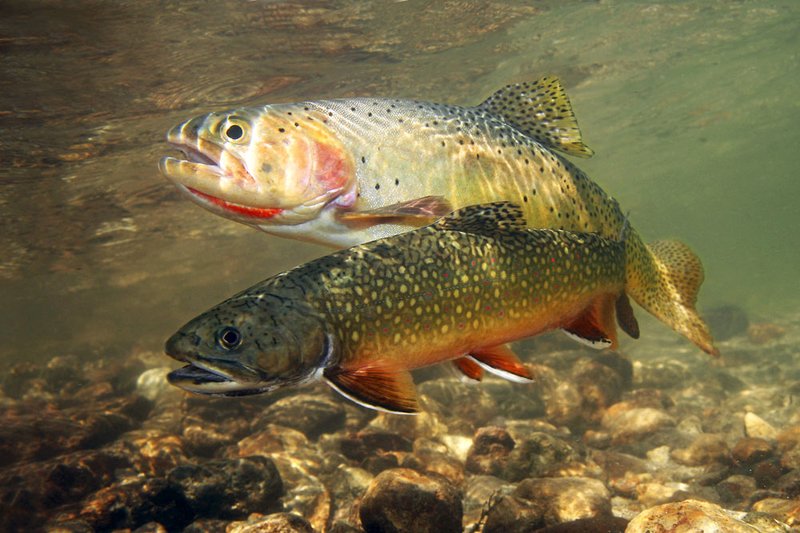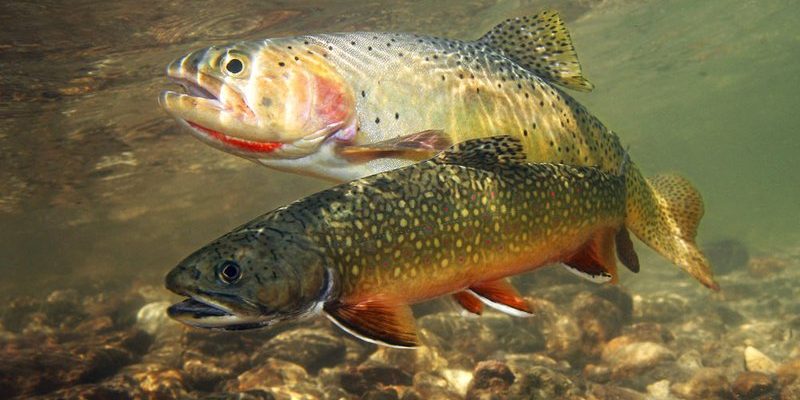
So, what are these threats? Think of it this way: imagine if your home was constantly threatened by pollution, invasive species, and climate change. Each of these factors makes it tougher for trout to thrive. In this article, we’ll dive into the common threats trout encounter in the wild, exploring how these challenges affect them and what we can do to help.
Pollution: A Silent Killer
Pollution is one of the most significant threats to trout populations. When you consider how fish breathe, it’s clear that clean water is essential. Trout rely on their gills to extract oxygen from the water, so if the water is polluted, their health suffers. Think about it like breathing in a fog of smoke; it would be hard to take a deep breath, right?
Pollutants can come from various sources, including agricultural runoff, industrial discharges, and urban sewage. Heavy metals, pesticides, and fertilizers can seep into water bodies, leading to toxic conditions. The effects can be devastating: weakened immune systems, reproductive issues, and even death. Areas with high pollution levels often see reduced trout populations, meaning less biodiversity in those ecosystems.
One way to combat this is through better waste management practices and reducing chemical use in agriculture. By keeping our waterways free from harmful substances, we can help sustain trout populations for generations.
How Habitat Degradation Affects Trout
Besides pollution, habitat degradation poses a severe risk to trout. Imagine your favorite restaurant suddenly losing its charm because it’s overrun with trash and neglect. In the same way, trout habitats can be destroyed by development, deforestation, and dam construction.
Dams can block trout migration paths, preventing them from reaching their spawning grounds. This interruption can lead to a decline in populations because without adequate breeding, the number of trout can dwindle. Moreover, when natural habitats like wetlands are drained or destroyed, it limits the available space for trout to thrive.
To make a difference, supporting conservation efforts and promoting responsible land use can help protect these essential habitats. It’s about giving trout the safe spaces they need to flourish.
Invasive Species: Unwanted Invaders
Here’s the thing about invasive species: they often come in like uninvited guests at a party, taking over and disrupting the balance. In many regions, non-native fish and aquatic organisms outcompete native trout for food and resources. They can change the dynamics of the environment in ways that make it harder for trout to survive.
For example, species like the zebra mussel and Asian carp can alter ecosystems significantly. Zebra mussels filter out algae, which can deplete the food supply for young trout. Meanwhile, Asian carp can dominate a food chain, leaving little for native species. With limited resources and altered habitats, trout populations can plummet, creating a cascading effect on the ecosystem.
Combating invasive species often involves management efforts like monitoring populations and even removal in extreme cases. It’s a tough but necessary battle to keep trout habitats healthy.
Climate Change: The Ominous Overhead
You might be wondering how climate change ties into the plight of trout. Well, think of trout as temperature-sensitive animals. They prefer cooler waters, and as global temperatures rise, their habitats are increasingly at risk.
Warmer water not only reduces oxygen levels—making it harder for trout to breathe—but also promotes the growth of harmful algae blooms that can choke off the oxygen supply and poison fish. Furthermore, changes in rainfall patterns can lead to altered stream flows, affecting spawning and feeding areas for trout.
The impacts of climate change are broad-reaching, and trout are often considered a key indicator species. When they struggle, it’s a sign that something is wrong with the ecosystem as a whole.
Mitigating Climate Impacts
Addressing climate change might seem like a daunting task, but there are steps we can take. Reducing our carbon footprint and advocating for sustainable practices are vital. Engaging in local conservation projects aimed at stream restoration can create healthier environments for trout. Even simple actions, like planting trees along riverbanks, can help cool the water and provide shade.
Overfishing: A Heavy Toll
Imagine trying to enjoy a buffet but finding that people keep taking all the food faster than you can eat. That’s somewhat what happens with overfishing. When trout are caught faster than they can reproduce, their populations dwindle. This is especially true in popular fishing areas where anglers may not practice catch-and-release tactics.
Overfishing can drastically alter the population structure of trout—removing larger, breeding individuals can lead to less genetic diversity and smaller future populations. When the young fish don’t have older mentors to guide them, it affects their survival instincts and growth.
To help mitigate overfishing, promoting sustainable fishing practices is essential. This includes adhering to catch limits and participating in local conservation programs focused on rebuilding fish stocks.
Diseases and Parasites: The Hidden Threats
Just like humans, trout can fall victim to diseases and parasites. Imagine feeling sluggish when you’re sick; it’s the same for fish. Certain diseases can spread rapidly in crowded environments, especially during spawning seasons when trout congregate.
Parasites, such as lice or flukes, can attach to trout, leading to poor health, stunted growth, and even death. These conditions can worsen if combined with other stressors like poor water quality or habitat degradation.
Monitoring fish health is crucial. Fisheries biologists often test populations for disease to manage outbreaks before they become too widespread. Encouraging healthy environments means trout can fend off illness better!
Creating a Sustainable Future for Trout
Ultimately, the future of trout in the wild depends on our collective actions. Here’s where you come in: being informed about the issues facing trout can lead to meaningful change. Supporting local conservation efforts, advocating for pollution control, and practicing sustainable fishing can make a big difference.
Imagine being part of a community that protects these beautiful fish and their habitats. It’s not just about trout; it’s also about maintaining healthy ecosystems that benefit all wildlife and even humans.
So, the next time you’re near a river or lake, take a moment to appreciate the trout. Remember the challenges they face and consider how you can help ensure these stunning fish continue to thrive in our wild waters. Every little action counts—together, we can make a difference.

